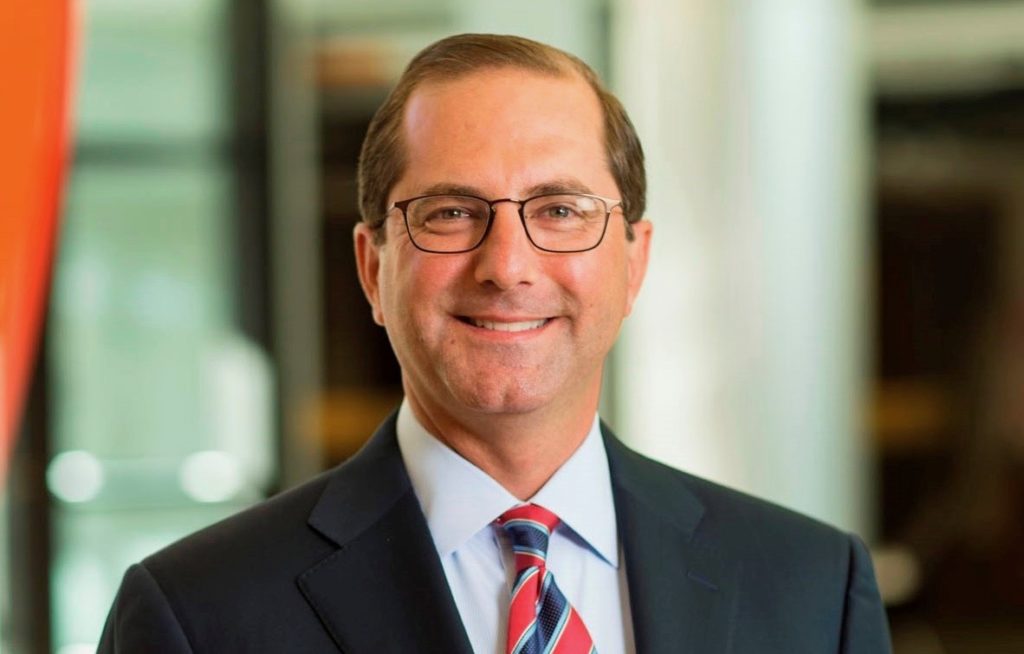Health and Human Services Secretary Alex Azar on Tuesday trumpeted the new payment model for skilled nursing facilities in a speech before a prominent trade group, positioning the plan as one piece of a larger change in the way the government pays for health care.
The new Patient-Driven Payment Model (PDPM) incorporates the dual goals of overhauling Medicare and Medicaid while also easing regulatory and government burdens on providers, Azar told the American Health Care Association in Washington, D.C.
“The PDPM would be a significant shift in how SNFs are paid, and, we believe, a very positive one,” Azar said, according to his prepared remarks. “It reflects our belief that we should not be paying providers in ways that drive overuse of services. Instead, we should pay providers based on the patients they treat, while assessing quality fairly.”
But Azar also issued a warning for companies that were more reluctant to get on board.
“Some of the necessary changes won’t be so comfortable for entrenched players,” he said. “But those who are interested in working with us to build a new system will have unprecedented opportunities at hand.”
The Centers for Medicare & Medicaid Services (CMS) rolled out PDPM as a proposed model back in April, characterizing it as a new and improved version of the previously floated Resident Classification System, Version I (RCS-I). PDPM has earned early plaudits from prominent skilled nursing CEOs, who have generally described the model as a more operator-friendly take on RCS-I.
In fact, AHCA senior vice president of reimbursement policy Mike Cheek told SNN that providers should see it as a natural extension of RCS-I, which had already shifted incentives away from volume of therapy services provided and toward outcomes-based reimbursements.
“I think that we view it as modernizing our SNF prospective payment system, as a step forward,” he said.
CMS emphasized that PDPM would require significantly less paperwork than RCS-I, a theme that Azar emphasized in his remarks to AHCA.
“One of the virtues of the PDPM proposal, as all of you know, is reduced paperwork burdens — to the tune of $2 billion in lower costs over the next decade,” Azar said, referring to CMS’s savings projections.
The paperwork angle was just one of the ways Azar implied that PDPM was a departure from previous attempts at SNF regulatory reform.
“You can look at the proposal of the PDPM as a model of how we want to initiate change in the health care marketplace,” he said. “We want to work collaboratively and transparently, which is why we issued an advance notice of proposed rulemaking. We will listen to comments from stakeholders. But we aren’t afraid of rethinking a whole model of payment if the status quo could be improved for patients.”
Overall, Azar struck an optimistic tone, looking toward the future and pointing to favorable demographic trends for the skilled nursing and long-term care industries.
“It’s much better to be running a nursing home these days in America than to be running a college or university,” he said.
In addition to his commentary on PDPM, Azar also called for greater interoperability among electronic health records systems, and praised President Trump — who appointed him last year in the wake of former secretary Tom Price’s resignation — for his record so far on health care issues.
“I exhort all of you to engage with us on the issues I’ve discussed today and take advantage of the opportunities they represent, because under this president, in American health care, change is coming,” Azar said.
Written by Alex Spanko
Companies featured in this article:
Centers for Medicare & Medicaid Services, Department of Health and Human Services



